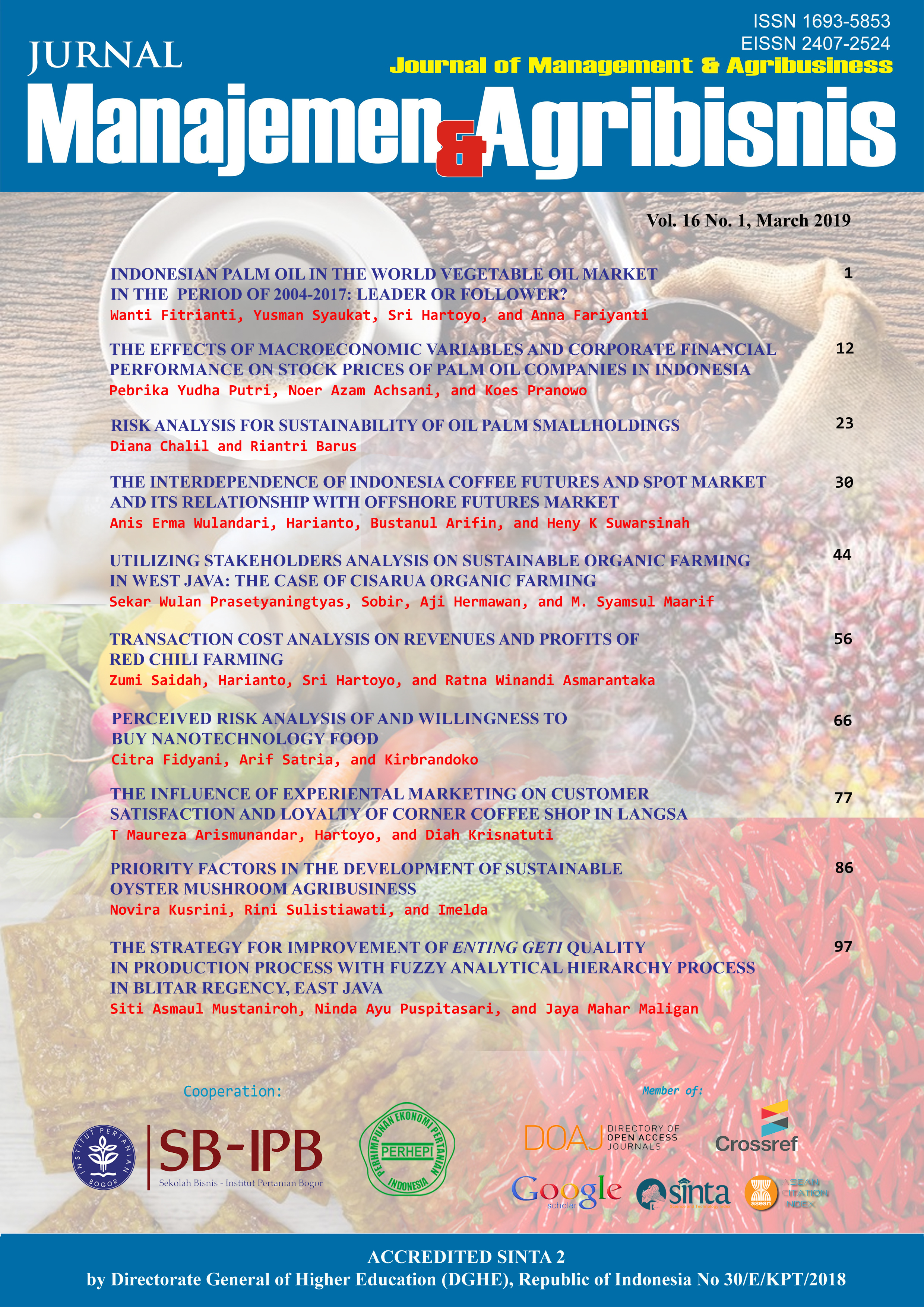Abstract
Oil palm plantation is well known as a profitable business. In general, oil palm smallholders have a higher income than farmers of other commodities. However, most smallholdings have land sizes that do not reach the economic scale. Together with the lack of managerial skills, smallholdings are likely to be more vulnerable to production and price fluctuations, which in turn affects their business sustainability. This study was conducted to analyze the possibility and impact of production and price changes to the oil palm smallholdings’ sustainability. Data were collected from 240 schemed and independent smallholders in Asahan, Labuhan Batu, Labuhan Batu Utara and Labuhan Batu Selatan, which were selected with purposive cluster sampling. The production and market risk possibility and impact were measured with Value at Risk Method. The estimations showed that smallholders had a low risk possibility and impact, which partly stemmed from the enormously low threshold of both production and market risks. In fact, on average, smallholders’ productivity is less than 20% of the potentials, and many schemed smallholders receive low prices due to their aged trees. This may be harmful to smallholding sustainability. Since VaR only considers risks from variations of production and price, a low threshold is not considered as a risk for sustainability. Therefore, further studies using different thresholds or approaches are required. From the policy implication point of view, to address such a situation, the Indonesian government needs to improve smallholdings’ productivity and their composition of trees.
Authors
Authors who publish with this journal agree to the following terms:
- Authors retain copyright and grant the journal right of first publication with the work simultaneously licensed under a Creative Commons Attribution License that allows others to share the work with an acknowledgement of the work's authorship and initial publication in this journal.
- Authors are able to enter into separate, additional contractual arrangements for the non-exclusive distribution of the journal's published version of the work (e.g., post it to an institutional repository or publish it in a book), with an acknowledgement of its initial publication in this journal.
- Authors are permitted and encouraged to post their work online (e.g., in institutional repositories or on their website) prior to and during the submission process, as it can lead to productive exchanges, as well as earlier and greater citation of published work (See The Effect of Open Access).

